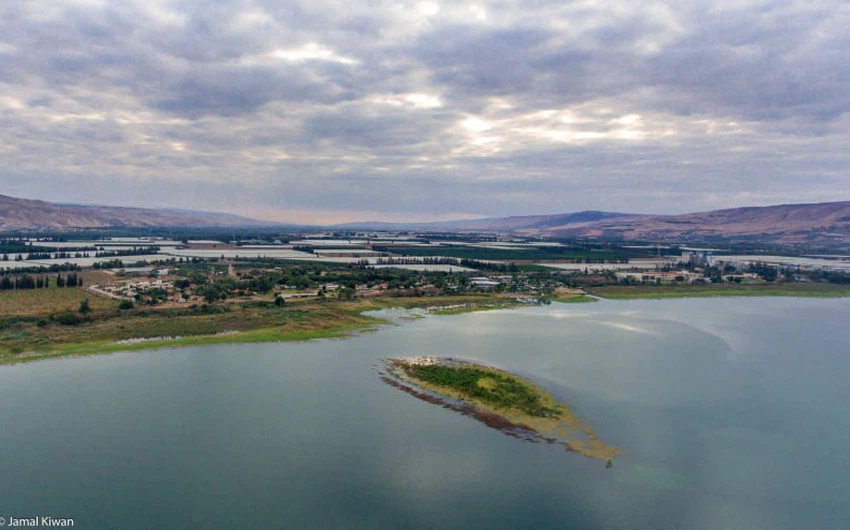What does the emergence of an island in the Sea of Galilee mean .. !!
The Sea of Galilee is the largest water body in the Levant region, in a region that suffers from a lack of water in general, and the lake is the main source of fresh water in addition to agricultural, tourism and religious activities in the region.
It is the lowest freshwater lake in the world, where it is minus (210 -) meters from the sea and the second lowest water surface in the world after the Dead Sea. Its length is 21 km, its width is 11 km, and its depth is 45 meters.The circumference of its winding beaches is 55 km.The lake covers an area of 160 square km and the size of its water reserves is about 4 billion cubic meters.
Its water resources are renewed from the water sources that flow into it and flow into the lake an average of (900) million cubic meters annually from two main sources: the Upper Jordan River, the lake basin, consisting of springs, streams, seasonal valleys, and rain water.
According to the photos taken by the friend (Jamal Kiwan) only recently, a small island appeared three years ago in the body of the lake. This is evidence of the following:
• The water level in the lake body has decreased significantly.
• High level of unfair pumping from them
• The clear and real impact of the extent of the "climate change" incursion through the prevalence of a long period of chronic drought, which is represented by the lack of rainfall and its fluctuation (rainy season 18/29/209 as an exception), and hence a clear and significant decrease in the sources of supplying the lake with water from all sources.
• There is a negative relationship between the low level of the lake and the Jordanian hydrology, as the quantities of water leaving the lake that feed the Jordan River will decrease to lower rates than previous years.
• Note the accompanying pictures from the photography of the creative friend Jamal Kiwan. All thanks and appreciation.
• Hear the publication and re-publication provided that the two sources are mentioned.
ArabiaWeather Company shall not be responsible for any republication. The materials published in the “Arabia Weather Blogs” in the various media, which puts anyone who publishes these blogs in the name of the Arabia Weather or quoting the Arabia Weather under liability and legal accountability.
Arabia Weather App
Download the app to receive weather notifications and more..





